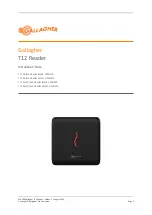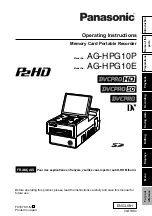
8(14)
6.
Instructions for use
Work can be started once the sand / salt spreader is mounted according to the instructions and the hydraulic
fittings are connected. Check the attachment and the operating environment once more before starting to
work. Quick inspection of the sand spreader prior use is part of ensuring safety and the best performance of
the equipment.
•
Check that the spreader is in order and that the spreading and mixer axles can rotate freely. Check
that there is no string or other foreign material coiled around the axles.
•
Remove larger sand clogs or split them to smaller pieces for even sanding results.
•
Check that all obstacles, including any possibly hidden ones, have been removed from the working
area before operation. Remember correct working methods and avoid getting down unnecessarily
from the loader.
•
Check regularly to ensure there are no hydraulic leaks.
•
Ensure that the loader and the attachment are used in a safe and intended manner. Do not allow
children to operate the machine.
•
Operate the attachment from the driver's seat only.
Due to the operating principle of the spreaders, they can be used to their intended
rotating direction only. The rubber lip plate and the sweeping plate (see section 7.2)
may get damaged, if the spreader is not used properly. If material does not come out
from the spreader or it comes out poorly, first check the direction of rotation and then
the settings of the spreader (see section 6.3).
Never put your hand inside the spreader or try to reach the axles by hand. To remove
clogs or lumps, use an aid to remove the clog. For example, use a brush handle or
some other suitable object. Watch out that clothes do not get tangled with the spreader
axles. Always turn off the spreader before descending from the loader.
Before using the spreader, check that it is intact and that all protective covers and the
protective grille inside the spreader are in place. Do not use the attachment if any of the
protective covers is missing.
To ensure the stability of the spreader during storage, use it until it is empty or empty the spreader on
purpose before demounting the attachment. The spreader should be stored so that the longest side is
against the ground surface, as shown in figure below, not in the upright position.
Unattached spreader may tip over;
keep a safe distance. Ensure the
stability by placing the attachment
firmly on the ground on a stable
position.
6.1.
Filling the spreader
Lifting material from a pile requires the most power from the loader. To ensure the best performance of
equipment, the correct working method must be observed especially when using the sand / salt spreaders.
Filling the large bucket by ramming straight into a pile of heavy material and then trying to lift or tilt the bucket
is not possible with any loader type. The loading is most effective when only the tip of the bucket is pushed
into the pile, and then by simultaneous driving, lifting and tilting the equipment, material is cut into the bucket.
Use high engine revolutions and read the instructions for correct use of the drive pedal from the loader
manual.
































